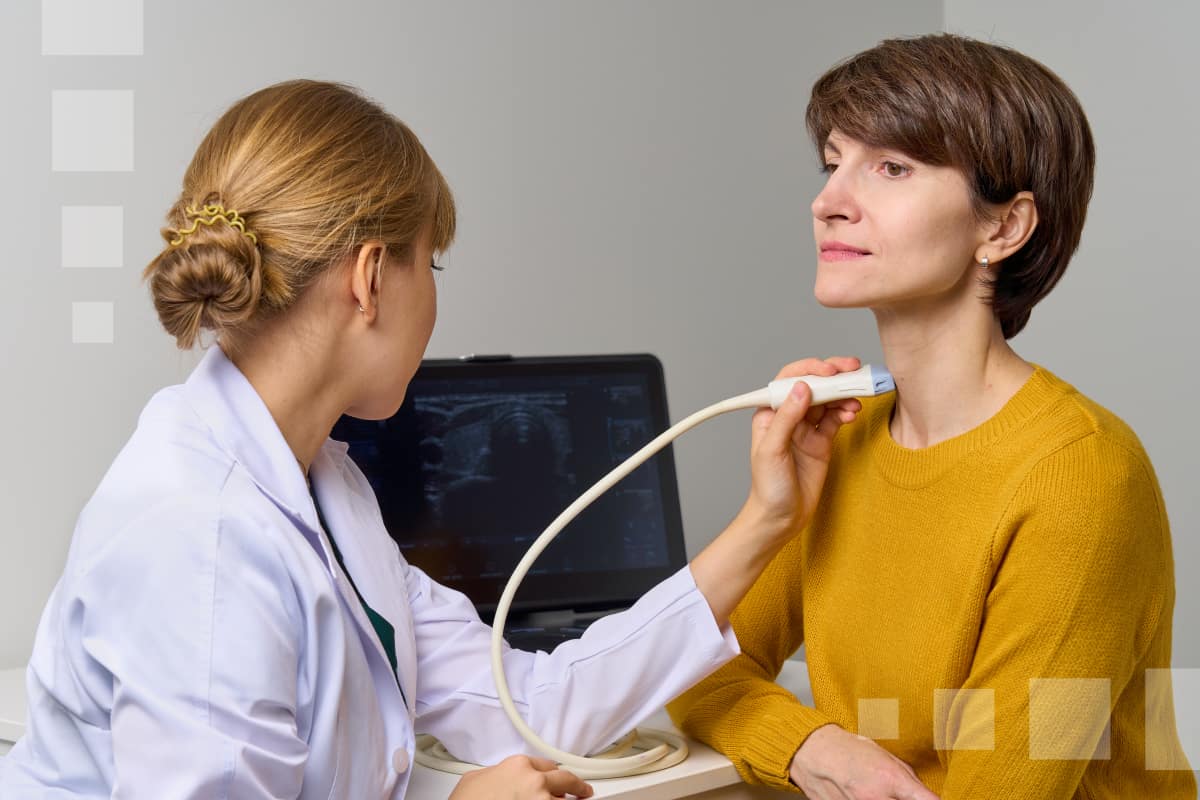
MDP syndrome, also known as mandibular dysplasia with deafness and progeroid features, is an incredibly rare metabolic disorder. Fewer than 12 cases have been diagnosed worldwide as of December 2014. This condition is marked by a unique set of clinical features, including a small lower jaw, sensorineural hearing loss, and a generalized loss of subcutaneous fat. Genetically, it is primarily caused by mutations in the POLD1 gene on chromosome 19. These mutations lead to defective DNA polymerase activity, impacting DNA replication and repair. Despite its severe physical manifestations, many individuals with MDP syndrome achieve high intellectual and social development, often pursuing careers in fields like law, medicine, and computing.
Key Takeaways:
- MDP Syndrome is an extremely rare metabolic disorder with unique clinical features, including mandibular hypoplasia, deafness, and low testosterone levels. It requires a multidisciplinary approach for effective management.
- Individuals with MDP Syndrome often excel intellectually and socially, with no evidence suggesting a reduced life expectancy. Accurate diagnosis and effective treatment are essential for improving their quality of life.
What is MDP Syndrome?
MDP syndrome, also known as mandibular dysplasia with deafness and progeroid features, is an incredibly rare metabolic disorder. It presents a unique set of clinical features that affect various aspects of an individual's health.
-
Definition and Rarity: MDP syndrome is extremely rare, with fewer than 12 diagnosed cases worldwide as of December 2014.
-
Clinical Features: Key features include mandibular hypoplasia, deafness, lipodystrophy, low testosterone levels in males, and contractures of the long tendons of the toes.
Genetic Basis of MDP Syndrome
Understanding the genetic underpinnings of MDP syndrome is crucial for diagnosing and managing the condition. The primary culprit is a mutation in a specific gene.
-
Genetics: The POLD1 gene on chromosome 19 is primarily responsible for MDP syndrome. This gene encodes an enzyme essential for DNA replication.
-
Genetic Variability: Most cases result from a single codon deletion in the POLD1 gene, but other mutations, like a novel heterozygous mutation in exon 13 (R507C), have been reported.
-
Inheritance Pattern: MDP syndrome is not inherited in an autosomal dominant manner. It likely results from autosomal recessive inheritance or de novo heterozygous mutations.
Clinical Features and Management
The clinical features of MDP syndrome are diverse and require a multidisciplinary approach for effective management.
-
Mandibular Hypoplasia: A small lower jaw can lead to dental overcrowding, necessitating early tooth removal.
-
Deafness: Sensorineural hearing loss is common, and managing it with hearing aids can be challenging due to the small size of the ears.
-
Lipodystrophy: Generalized loss of subcutaneous fat leads to tight skin and calluses on the heels and forefoot.
-
Low Testosterone Levels in Males: Males often experience hypogonadism and undescended testes, which may require surgical intervention.
-
Contractures of the Long Tendons of the Toes: Claw toes and joint stiffness can worsen over time, requiring physiotherapy.
Diagnosis and Treatment
Accurate diagnosis and effective treatment are essential for improving the quality of life for individuals with MDP syndrome.
-
Diagnosis: Clinical features suggest the diagnosis, which can be confirmed by identifying a mutation in the POLD1 gene.
-
Deafness Management: Digital hearing aids can be helpful, and regular audiometry follow-up is necessary.
-
Feet and Contractures: Physiotherapy can help manage calluses and clawed toes due to the lack of subcutaneous fat.
-
Dental Management: Early tooth removal is often necessary to prevent severe dental overcrowding.
Intellectual and Social Development
Despite the physical challenges, individuals with MDP syndrome often excel intellectually and socially.
-
Intellectual Development: Many individuals with MDP syndrome are high achievers, pursuing careers in law, medicine, and computing.
-
Life Expectancy: There is no evidence to suggest that life expectancy is reduced in individuals with MDP syndrome.
Distinguishing MDP Syndrome from Other Conditions
MDP syndrome shares some features with other conditions but has distinct characteristics that set it apart.
-
Distinct Features from Progeria: Unlike Hutchinson-Gilford progeria syndrome, MDP syndrome does not involve accelerated aging or intellectual decline.
-
Comparison with MAD: MDP syndrome shares some features with mandibuloacral dysplasia (MAD) but has unique aspects like sensorineural hearing loss.
-
Sensorineural Hearing Loss: This hearing deficit is unique to MDP syndrome and not seen in MAD patients.
-
Generalized Loss of Subcutaneous Fat: The loss of subcutaneous fat in MDP patients is more pronounced compared to those with MAD.
Metabolic Complications and Management
MDP syndrome can lead to various metabolic complications that require careful management.
-
Hypogonadism and Undescended Testes: All males with MDP syndrome have hypogonadism and undescended testes, often requiring surgical intervention.
-
Metabolic Complications: Patients may experience diabetes mellitus, hypertriglyceridemia, low HDL cholesterol, and insulin resistance.
Research and Notable Cases
Research and notable cases help raise awareness and improve understanding of MDP syndrome.
-
Research and Diagnosis: Researchers at the University of Exeter Medical School and the Royal Devon and Exeter Hospital have been pivotal in diagnosing the condition.
-
Notable Cases: British para-cyclist Tom Staniford is a notable individual diagnosed with MDP syndrome.
Comparison with Other Lipodystrophies
MDP syndrome is one of several types of lipodystrophies, each with distinct features.
-
Genetic Variability in Lipodystrophies: Lipodystrophies are heterogeneous disorders characterized by selective loss of body fat.
-
Comparison with Other Lipodystrophies: MDP syndrome is distinct from other lipodystrophies like familial partial lipodystrophy (FPL) and neonatal progeroid syndrome.
Management Strategies and Future Research
Effective management and ongoing research are crucial for improving the lives of those with MDP syndrome.
-
Management Strategies: A multidisciplinary approach is essential, including endocrinological management, testosterone replacement therapy, and orthodontic interventions.
-
Physical Therapy: Physiotherapy can help manage contractures of the long tendons of the toes.
-
Dental Interventions: Early dental interventions can prevent severe dental overcrowding and related complications.
-
Future Research Directions: Further research is needed to understand the pathophysiology of MDP syndrome and develop more effective management strategies.
Understanding MDP Syndrome
MDP syndrome, though rare, presents a unique set of challenges and features. From mandibular hypoplasia and sensorineural hearing loss to generalized lipodystrophy and low testosterone levels in males, the condition affects multiple systems. The POLD1 gene mutation is the primary culprit, leading to defective DNA replication. Despite these physical hurdles, many individuals with MDP syndrome excel intellectually, pursuing careers in fields like law and medicine. Early diagnosis and a multidisciplinary approach to management, including endocrinological care, dental interventions, and physiotherapy, can significantly improve quality of life. Notably, life expectancy isn't reduced, and patients can live into their 60s and 70s. Continued research is essential for better understanding and managing this complex disorder. With the right care and support, those affected by MDP syndrome can lead fulfilling lives.
Frequently Asked Questions
Was this page helpful?
Our commitment to delivering trustworthy and engaging content is at the heart of what we do. Each fact on our site is contributed by real users like you, bringing a wealth of diverse insights and information. To ensure the highest standards of accuracy and reliability, our dedicated editors meticulously review each submission. This process guarantees that the facts we share are not only fascinating but also credible. Trust in our commitment to quality and authenticity as you explore and learn with us.


